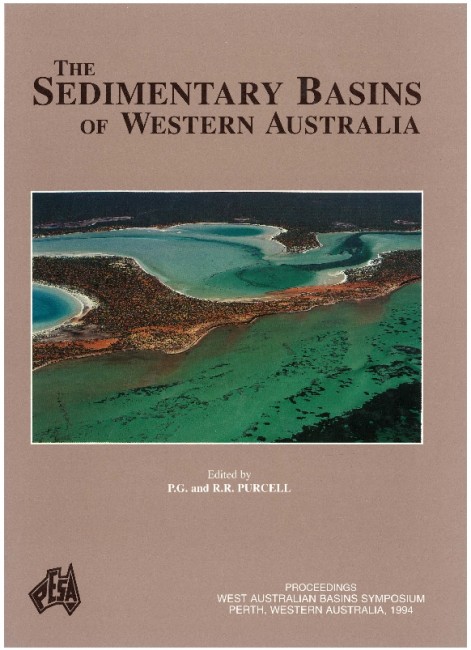Publication Name: The Sedimentary Basins of WA
Authors: J.M. Kennard, M.J. Jackson, K.K. Romine, R.D. Shaw and P.N. Southgate
Publication Volume: 1
Date Published: July 1994
Number of Pages: 31
Reference Type: Book Section
Abstract:
The concepts of petroleum systems and play element fairways provide an effective means to guide future exploration of the Canning Basin. Analysis of these systems is based on a new structural elements map, refined tectonic and stratigraphic frameworks, and syntheses of key play elements within each system.Major extensional and transpressional events controlled the depositional history of the basin and resulted in four first-order depositional megasequences. Superimposed second-order eustatic variations generated accommodation cycles that controlled 15 second-order supersequences. Within this tectonic and stratigraphic framework, four active petroleum systems are identified. The oldest (Larapintine 2 and 3) offer the best prospects for liquid hydrocarbons. Under optimum conditions, Larapintine 2 (Ordovician-Silurian) has the capacity to generate tens of billions of barrels of oil. Detailed understanding of maturation-migration history
relative to the timing of trap formation, and porosity distribution within the Nita carbonates are critical factors. Larapintine 3 (Devonian-Carboniferous) is productive at the Blina Oil Field, and offers further exploration opportunities for both 'traditional' reef targets (transgressive phase) and untested siliciclastic basin floor fans. Larapintine 4 (Carboniferous) is primarily .a gas and condensate system; it has produced the largest gas flow recorded in the basin (Point Torment-1), and produces minor oil at the Lloyd and West Kora fields. Exploration of this system is hampered by poor knowledge of the Anderson Formation. The youngest system, Gondwanan 1 (Permian), largely relies on migration from underlying systems. It produces at several small oil fields, but prospectivity is downgraded by the lack of adequate seals. Rich potential source intervals occur high in this system, and are most likely mature in the untested southern Gregory Sub-basin.
The distribution of key play elements within these systems is governed by the subsidence regime of each basin phase. Source-prone fairways tend to occur at the time of maximum transgression of each megasequence. Clastic and (non-reefal) carbonate reservoir-prone fairways occur in the regressive (slow subsidence) portion of megasequences, whereas reefal carbonate reservoir-prone fairways occur in the transgressive (rapid subsidence) portion. At a detailed scale, the partitioning of play elements within these fairways is controlled by second and higher-order eustatic variations which enhance the longer-term tectonic controls.


